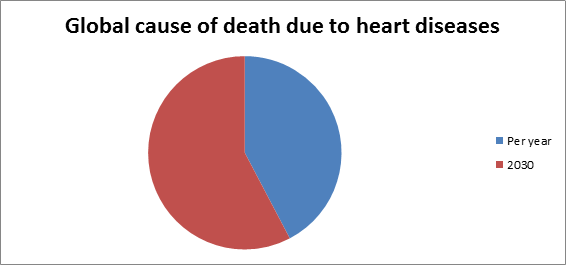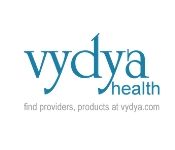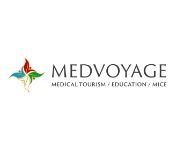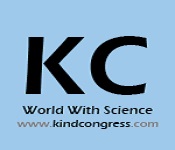Theme: Care heart for a long life
Hypertension Meeting 2020
Cardiology Conferences regards each one of the individuals to give their valuable presence at the "8th international conference on Hypertension and Healthcare" amidst August 10-11, 2020 which is working under theme: Experience and Exponential Advance in Cardiac Studies that melds brief keynote presentations, speaker talks, Exhibition, Symposia, and Workshops. Hypertension Meeting 2020 is one of the events which will be visited by all the prestigious cardiologists, cardiology educators, researchers, postgraduates, business meanders under a solitary rooftop. This Hypertension Meeting 2020 or rather all Cardiology meeting 2020, Blood pressure events and Hypertension conferences 2020 will help in frameworks organization, B2B meetings teaming up amidst specialists and academicians.
Why you should attend Hypertension Meeting 2020?
Because, we consistently strive to confer our patrons with enriched and didactic conference experiences. Here you get to network with the researchers, scientists and the industrialists whose work will have a profound impact on the field’s future scope.
The meeting covers a large area of knowledge in the field not only of hypertension but also of other cardiovascular and metabolic disorders related to hypertension. We deem to pay a particular attention to new technologies, such as innovative devices, new communicating tools and biological research. The presence of opinion leaders and experts from all around the world shall ensure the success of the meeting.
So there would be no reason for not joining the finest Cardiology Meeting ever.
We look forward to seeing you in Dubai.
Target Audience:
- Cardiologists
- Vascular surgeons
- Endocrinologists
- Directors of Hypertension or related Programs or Associations
- Heads, Deans and Professors of Hypertension or Cardiology departments
- Scientists and Researchers organizers
- Doctors
- Medical Colleges
- Writers
- Healthcare professionals
- Founders and Employees of the related companies
- Clinical investigators
- Hospitals and Health Services
- Pharmaceutical companies
- Laboratory members
- Training institution
Track 1: Hypertension
Hypertension also known as high blood pressure (HBP) is a long-term medical condition in which the blood pressure in the arteries is persistently elevated. High blood pressure typically does not cause symptoms. Blood pressure is expressed by two measurements, the systolic and diastolic pressures, which are the greatest and least pressures, individually. For most grown-ups, typical blood pressure very still is inside the scope of 100–130 millimetres mercury (mmHg) systolic and 60–80 mmHg diastolic. For most grown-ups, hypertension is available if the resting blood pressure is tenaciously at or over 130/80 or 140/90 mmHg. Various numbers apply to children. Ambulatory blood pressure monitoring over a 24-hour time span shows up more exact than office-based blood pressure measurement.
Track 2: Sources of Hypertension
Genes: Some people are genetically predisposed to hypertension. This might be from quality changes or genetic abnormalities inherited from your parents.
Physical changes: If something in your body transforms, you may start encountering issues all through your body. Hypertension might be one of those issues. For instance, it is the idea that adjustments in your kidney work because of maturing may agitate the body's characteristic equalization of salts and liquid. This change may cause your body’s blood pressure to increase.
Environment: Over time, unhealthy lifestyle choices like lack of physical activity and poor diet can take their toll on your body. Lifestyle choices can lead to weight problems. Being overweight or obese can increase your risk for hypertension.
Track 3: Pulmonary Hypertension
Pulmonary hypertension is a type of high blood pressure that affects the arteries in your lungs and the right side of your heart. In one form of pulmonary hypertension, tiny arteries in your lungs, called pulmonary arterioles, and capillaries become narrowed, blocked or destroyed. In one type of pulmonary hypertension, small arteries in your lungs, called pulmonary arterioles, and capillaries become narrowed, blocked or annihilated. This makes it harder for blood to move through the lungs and consequently raises the weight inside lung dividers. As the weight assembles, the heart's lower right chamber works more diligently to siphon blood through the lungs, in the long run causing the heart muscle fall flat. A few types of pulmonary hypertension are serious conditions that become dynamically more awful and are once in a while deadly. This session principally discusses the arrangement, signs, indications, and medicines of Pulmonary Hypertension.
Track 4: Paediatric Hypertension
High blood pressure in children and adolescents is a growing health problem that is often overlooked by physicians. Normal blood pressure values for children and adolescent depend on age, sex, and stature, and are accessible in institutionalized tables. Prehypertension is defined as a blood pressure in at least the 90%, however not exactly the 95% for age, sex, and stature, or an estimation of 120/80 mm Hg or more prominent. Hypertension is characterized as circulatory strain in the 95% or more prominent. An optional ethology of hypertension is considerably more likely in children than in adults, with renal parenchymal infection and Reno-vascular disease being the most common. Overweight and obesity are strongly correlated with primary hypertension in children. A history and physical examination are needed for all children with newly diagnosed hypertension to help rule out underlying medical disorders.
Track 5: Gestational Hypertension
Gestational Hypertension is also known as pregnancy induced hyper tension, is a group of high blood pressure disorders that include preeclampsia, eclampsia, gestational hypertension, and chronic hypertension. There are three types of gestational hypertension, Chronic Hypertension, Gestational Hypertension, Preeclampsia. We can find Gestational Hypertension by each prenatal checkup; your healthcare provider will check your blood pressure and urine levels. Your doctor may also check your kidney and blood-clotting functions, order blood tests, perform an ultrasound scan to check your baby’s growth, and use a Doppler Scan to measure the efficiency of blood flow to the placenta. High Blood Pressure (Hypertension) during pregnancy can forestall the placenta (the nourishment supply for the child in the belly) from getting enough blood. The brought measure of blood down to the placenta can prompt a low birth weight.
Track 6: Reno-vascular Hypertension
Reno-vascular hypertension is high blood pressure due to narrowing of the arteries that carry blood to the kidneys. This condition is also called renal artery stenosis. Renal hypertension is caused by a narrowing in the arteries that deliver blood to the kidney. One or both kidneys arteries may be narrowed. This is a condition called renal artery stenosis. When the kidneys receive low blood flow, they act as if the low flow is due to dehydration. So they respond by releasing hormones that stimulate the body to retain sodium and water. Blood vessels fill with additional fluid and blood pressure goes up. The narrowing in one or both renal arteries is most often caused by atherosclerosis, or hardening of the arteries. This is the same process that leads to many heart attacks and strokes. A less common cause of the narrowing is fibro muscular dysplasia.
Track 7: Cardio Metabolic Risk in Hypertensive Patients
Cardio-metabolic risk is a condition in which the possibilities of developing atherosclerotic cardiovascular disease and diabetes mellitus are significantly enhanced as a consequence of the presence of insulin resistance and atherogenic dyslipidaemia, the latter being characterized by the presence of low high-density lipoprotein (HDL) cholesterol and high triglyceride levels. Cardio-metabolic risk is diagnosed by the identification of an enhanced waist circumference accompanied by the alterations in lipid profile quoted above. The aim of intervention in patients with cardio-metabolic risk is to achieve an optimal reduction of such risk. Lifestyle modifications counteract the effect of the underlying risk factors. Moreover, hypertensive also require a tight Blood Pressure control, a choice of antihypertensive treatment not producing other metabolic disturbances, and, quite often, parallel drug treatment for associated metabolic risk factors.
Track 8: Hypertension, Stroke & Obesity
Stroke is a leading cause of death and severe, long-term disability. Most people who’ve had a first stroke also had high blood pressure (HBP or hypertension). High blood pressure damages arteries throughout the body, creating conditions where they can burst or clog more easily. Weakened arteries in the brain, resulting from high blood pressure, put you at a much higher risk for stroke which is why managing high blood pressure is critical to reduce your chance of having a stroke. According to some reports, the change in the blood pressure behaviour can be due to various habits like overeating, drinking or poor sleeping. It’s possible that health conditions related to stress like anxiety, depression, and isolation from friends and family may lead to heart disease but not to a high blood pressure condition. Some hormonal changes may damage your arteries leading towards heart disease.
Track 9: Hypertension & Diabetes
High blood pressure (hypertension) can lead to many complications of diabetes, including diabetic eye disease and kidney disease, or make them worse. Most people with diabetes will eventually have high blood pressure, along with other heart and circulation problems. There are two types of diabetes those are Type 1 diabetes can develop at any age, but occurs most frequently in children and adolescents. When you have type 1 diabetes, your body produces very little or no insulin, which means that you need daily insulin injections to maintain blood glucose levels under control. Type 2 diabetes is more common in adults and accounts for around 90% of all diabetes cases. When you have type 2 diabetes, your body does not make good use of the insulin that it produces. The cornerstone of type 2 diabetes treatment is healthy lifestyle, including increased physical activity and healthy diet. However, over time most people with type 2 diabetes will require oral drugs and insulin to keep their blood glucose levels under control.
Track 9: Hypertension Risk Factors, Diagnosis and Treatments
High blood pressure has many risk factors, including Age. Race, Family history, Being overweight or obese, Not being physically active, Using tobacco etc. Hanging your lifestyle can go a long way toward controlling high blood pressure. Your doctor may recommend you make lifestyle changes including: Eating a heart-healthy diet with less salt, getting regular physical activity, maintaining a healthy weight or losing weight if you're overweight or obese, limiting the amount of alcohol you drink, but sometimes lifestyle changes aren't enough. In addition to diet and exercise, your doctor may recommend medication to lower your blood pressure.
Track 10: Yoga and Naturopathic Treatments
Naturopathy Treatments address simple causes to check the disease, like a change in diet and lifestyle to help contain the blood pressure within prescribed limits. One of the key factors that trigger Hypertension is the fast and stressful lifestyle. Excessive intake of intoxicants, smoking, rampant consumption of tea/coffee, fast food and processed food are all high in calories and rich in sodium salt. These fat rich food leads to obesity which raises the cholesterol level resulting in narrowing of blood vessels causing extra pressure on the heart to pump blood through the blood vessels. Naturopathy addresses some key factors in our lifestyle through yoga and well monitored diet that can bring the blood pressure to normal level
Track 11: Nursing Management of Hypertension
Nursing assessment must involve careful monitoring of the blood pressure at frequent and routinely scheduled intervals. If patient is on antihypertensive medications, blood pressure is assessed to determine the effectiveness and detect changes in the blood pressure. Complete history should be obtained to assess for signs and symptoms that indicate target organ damage. Pay attention to the rate, rhythm, and character of the apical and peripheral pulses. Hypertension Nursing Care Plans.
Track 12: Cardiac Medications and Device Therapy
Implantable cardiac devices are a mainstay in treating cardiac diseases and include pacemakers, cardioverter defibrillators, and cardiac resynchronization therapy. Some drugs can interfere with these devices, while certain medications can prevent inappropriate shocks from the devices. Type of Cardiac Devices. Many cardiac devices are designed to help control irregular heartbeats in people with heart rhythm disorders. These devices include implantable cardioverter defibrillators, or ICDs, pacemakers, and implanted heart rhythm monitors called loop recorders. Reason for Medication, it helps prevent clotting in patients who have had a heart attack, unstable angina, ischemic strokes, TIA (transient ischemic attacks) and other forms of cardiovascular disease. Can also be prescribed preventively when plaque build-up is evident but there is not yet a major blockage in the artery. Certain patients will be prescribed aspirin combined with another antiplatelet drug also known as dual antiplatelet therapy (DAPT).
Track 13: Advanced Treatments Approaches
Aldosterone is a mineralocorticoid that regulates electrolyte and volume homeostasis in normal subjects and, when elevated, can contribute to the development of hypertension and a variety of related pathologies, including myocardial hypertrophy and fibrosis and HF. The principal effector of aldosterone action is the mineralocorticoid receptor (MR), a nuclear transcription factor that is expressed at high levels in the cortical collecting duct of the kidney Activated MRs stimulate expression of sodium channels, resulting in increased sodium and water reabsorption and potassium loss, leading eventually to a volume expanded form of hypertension. Activation of mineralocorticoid receptors in extra adrenal tissues, particularly the heart and blood vessels, also promotes the development of hypertension and CVD by up regulating NADPH oxidase and increasing production of reactive oxygen species. This reduces the bioavailability of nitric oxide and leads to endothelial dysfunction and vascular disease.
Track 14: Global Burden of Hypertension
In 2019, World Health Organisation and the United States Centres for Disease Control and Prevention launched the Global Hearts Initiative to support governments to prevent and treat cardiovascular diseases. Of the five technical packages that comprise the Global Hearts Initiative, the HEARTS technical package aims to improve the prevention and management of cardiovascular diseases, including hypertension detection and management. The five modules of the HEARTS technical package (Healthy-lifestyle counselling, Evidence-based treatment protocols, Access to essential medicines and technology, Team-based care, and Systems for monitoring) provide a strategic approach to improve cardiovascular health in countries across the globe.
Track 15: Hypertension Society and Culture
In the United States, researchers note that factors such as modernization, education, and structural assimilation were correlated with favourable Blood Pressure profiles. The prevalence of hypertension among Hispanic Americans appears to increase with the process of acculturation and is inversely correlated with socioeconomic status. Indeed, acculturation and language proficiency in this ethnic group can be directly correlated with the incidence of diabetes and associated morbidities, which have implications for cardiovascular health. For example, among Mexican Americans, acculturation and age are strong predictors of hypertension as opposed to economic status. Based on these findings, Mexican American women who are English proficient and had healthcare coverage were more likely to be screened for heart disease.
Track 16: Clinical Case Reports
To fully appreciate the complexity and challenges in interpreting hypertension trials, it is informative to review their evolution. The prospective, randomized, clinical trial has been the foundation for evaluating the effectiveness of blood pressure-lowering drugs. The duration of clinical trials rarely exceeds five years, and trials focus on so-called “hard end points”—notably, all-cause mortality and/or cause specific morbidity and mortality due to CVD, usually coronary heart disease (CHD) and/or stroke, but more recently heart failure (HF) as well. The early clinical trials had the advantage of being able to compare active therapy with placebo and usually included patients with more severe hypertension, as compared with modern trials. Consequently, they generated more end points and had sufficient power to be conducted on a smaller scale than modern trials high blood pressure is often called a "silent disease" because people usually don't know they have it; there may be no outward symptoms or a sign, so monitoring the blood pressure is critical. Treating high blood pressure can take a multi-pronged approach including diet changes, medication, and exercise. Hypertension treatment comes in many forms from lifestyle changes to medication. Hypertension Meetinging provides participants and speakers alike with the unique opportunity to debate the most pressing issues in diabetes, obesity and hypertension.
Importance & Scopes
Lifestyle factors are critical determinants of blood pressure levels operating against a background of genetic susceptibility. Excess body fat is a predominant cause of hypertension with additive effects of dietary salt, alcohol, and physical inactivity. As the number of patients grows across the globe, there has never been a stronger and more urgent need for therapeutic measures that arrest the growth of the disease and alleviate its secondary manifestations.
Hypertension affects an estimated 55 million people in the United States and is the 2nd leading cause of death. It increases the all-cause mortality rate 5 times compared to persons without heart diseases. In addition to these human costs, the estimated total financial cost of hypertension in the United States in 2019 was $435 billion, which includes the costs of medical care, disability, and premature death.
The importance of both cardiology and their comorbidities will continue to increase as the population ages. Therapies that have proven to reduce micro-vascular and macro-vascular complications will need to be assessed considering the newly identified comorbidities.
Why in Dubai?
Dubai is the capital and the most populous city of the United Arab Emirates. Dubai is the wealthiest emirate of the UAE in terms of Gross Domestic Product (GDP) and per capita income. More than $3 trillion is invested worldwide in this city alone. In 2019, the GDP per capita also reached $83,400, which ranks 4th in the world after Qatar, Liechtenstein and Luxembourg and many others.
Market Analysis
According to Statistics MRC, the Global Stroke Diagnostics and Therapeutics market is reckoned for $27,658.49 Million in 2019 and is estimated to reach $54,731.54 Million by 2030 growing at a CAGR of 11.5% during the forecast period.
Factors like technological advancement, a growing aging population, and people affected by diabetes, high blood pressure are favouring the market. On the other hand, increasing health expenditure, cardiovascular diseases and increasing tobacco users are supplying the market.
Hypertension is a chronic medical condition during which the blood pressure is elevated to an unsought level. Hypertension is a chronic disease, which means that a patient could need to require medications a day for the rest of his/her life. Thus, the demand for anti-hypertensive medication is property and can increase with a rise within the variety of target patients. Anti-hypertensive drugs were the second largest therapy area in 2019 with the worldwide sales worth of over USD 55 billion; according to the globe Preview 2018 report by valuate Drug Company.
Some of the key factors contributing to the worldwide anti-hypertensive medication market include Novartis AG, Pfizer, Inc, Johnson & Johnson Ltd, Sanofi S.A., Lupin Limited, Ranbaxy Laboratories Limited, Merck & Co., Inc., Astra Zeneca Plc, Daiichi Sankyo Company Limited, and Takeda Pharmaceutical Company Limited.
Recent research report analyses anti-hypertensive medication market counting on its market segments, major geographies, and current market trends. Geographies analysed under this analysis report include
- UAE
- North and South America
- Asia Pacific
- Rest of the World
Countries in Middle East bear a heavy burden from Ischemic heart disease. According to, Dubai Health Authority, Heart disease is the cause for every 4 in 10 deaths in the UAE. Huge funding in R&D and various initiatives by government is driving the growth for Ischemic heart Disease market in Middle East. Middle-East Ischemic heart Disease market is growing steadily. The market is growing at the CAGR of 5.8% and expected to reach to US$ 4.73 billion by 2021. UAE market for medical devices and materials continues to be among the world largest from few years. As per the latest official figures from the Ministry of Health, Labour and Welfare (MHLW) and Annual Pharmaceutical Production Statistics, the UAE market for cardiology medical devices and materials in 2019 was approximately $45.1 billion. UAE total imports of U.S. medical devices were approximately $9.2 billion in 2019. In the near-term, the market is expected to increase due to UAE aging population and continued demands for advanced medical technologies.

The total UAE market for interventional cardiology devices is growing at a rate of 4.1%, which will take the 2019 market value of $151,896 up to $166,789 by 2024. UAE hospitals tend to gravitate towards the more expensive and technologically advanced devices. The total market value includes a large number of segments such as the coronary stent, coronary balloon catheter, balloon-inflation device, interventional coronary catheter, interventional coronary guide wire, introducer sheath, coronary vascular closure device, diagnostic coronary catheter and guide wire, fractional flow reserve (FFR) guide wire, intravascular ultrasound (IVUS) catheter, and optical coherence tomography (OCT) catheter market.
Global cause of death due to heart diseases: By 2030 almost about 60% of the deaths are supposed to occur due to cardiac diseases when compared to deaths with other diseases globally.

Cardiology Universities in Dubai
- Mohammed Bin Rashid University Of Medicine and Health Sciences
- Murdoch University Dubai
- Dubai Medical College
- German Heart Centre Bremen FZ-LLC
- University of Wollongong in Dubai (UOWD)
- Zayed University
- College of Medicine University of Sharjah
- KidsHeart Medical Center Dubai
- Curtin University Dubai
- American University in the Emirates
- Amity University Dubai campus
- Manipal Academy of Higher Education - Dubai Campus
- University of Dubai
- Middlesex University Dubai
- University of Sharjah
- American University in Dubai
- Heriot-Watt University Dubai
- Canadian University Dubai
- Gulf Medical University
- Birla Institute of Technology & Science, Pilani - Dubai Campus
Worldwide Cardiology Universities
- Duke University
- University of Pennsylvania
- University of Michigan
- The University of Utah
- University of Rochester
- The University of Chicago
- Emory University
- University of Minnesota
- North-western University
- University of Mn Med School
- Rush University Cardiologists
- UAB Cardiovascular Disease Administrative Office
- University of Florida
- Indiana University School of Medicine
- North-western University Feinberg School of Medicine
- Indiana University School of Medicine
- Creighton University
- The University of Arizona
- American College of Cardiology
- Rush University
Major Societies related to Hypertension
- St. Lucia Diabetes & Hypertension Association (SLDHA)
- British Hypertension Society
- American Society of Hypertension
- Pulmonary Hypertension Association
- American Heart Association's Council on Hypertension
- Pulmonary Vascular Research Institute
- International Society of Hypertension
- European Society of Cardiology
- Argentine Society of Hypertension
- Asian Pacific Society of Hypertension
- Austrian Society of Hypertension
- Belgian Hypertension Committee
- Belorussian Hypertension League
- Botswana - Heart Foundation of Botswana
- Brazilian Society of Hypertension
- Bulgarian Hypertension League
- Cameroon Cardiac Society
- Chinese Hypertension League
- Council for High Blood Pressure of the Irish Heart Foundation
- Council for the High Blood Pressure Research of the AHA
- Croatian Society of Hypertension
- Danish Hypertension Society
- Egyptian Hypertension Society
- Estonian Society of Hypertension
- European Council for Cardiovascular Research
- European Society of Hypertension
- French Society of Hypertension
- German Hypertension Society
- Hellenic Society for the Study of Hypertension
- High Blood Pressure Research Council of Australia
- Hong Kong College of Cardiology
- Inter-American Society of Hypertension
- Israeli Society of Hypertension
- Italian Society of Hypertension
- Japanese Society of Hypertension
- Korean Society of Hypertension
- Latin American Society of Hypertension
- Libyan Cardiac Society
- Lithuanian Hypertension Society
- Malaysian Society of Hypertension
- Norwegian Society of Hypertension
- Pakistan Hypertension League
- Pulse of Asia
- Russian Antihypertensive League
- Serbian Society of Hypertension
Hospitals Associated with Hypertension
- Hospitals of the University of Pennsylvania-Penn Presbyterian
- Mount Sinai Hospital
- University of Michigan Hospitals and Health Centers
- Duke University Hospital
- Brigham and Women's Hospital
- Barnes-Jewish Hospital
- UCLA Medical Center
- Stanford Health Care-Stanford Hospital
- Heart Hospital Baylor Plano
- Houston Methodist Hospital
- Loyola University Medical Center
- NYU Langone Medical Center
- UPMC Presbyterian Shadyside
- Scripps La Jolla Hospitals
- Ohio State University Wexner Medical Center
- UCSF Medical Center
- Sentara Norfolk General Hospital-Sentara Heart Hospital
- Texas Heart Institute at Baylor St. Luke's Medical Center
- Beaumont Hospital-Royal Oak
- Minneapolis Heart Institute at Abbott Northwestern Hospital
- Vanderbilt University Medical Center
Related Societies:
USA: American Society of Hypertension, American Association of Cardiovascular and Pulmonary Rehabilitation, American Association of Heart Failure Nurses, American Cardiology Association, American Society of Echocardiography, American Society of Nuclear Cardiology, American Diabetes Association, American Stroke Association, Inter-American Society of Hypertension, Latin American Society of Hypertension, Brazilian Society of Hypertension, American Heart Association, Congenital Cardiac Anaesthesia Society, Primary Care Diabetes Society, Northwest Association of Cardiovascular and Pulmonary Rehabilitation, Hypertension Canada, Pulmonary Hypertension Association, Heart and Stroke Foundation of Canada
Europe: Austrian Heart Foundation, British Cardiovascular Society, British Heart Foundation, British Hypertension Society, Irish Nurses Cardiovascular Association, European Society of Hypertension, European Stroke Organisation, Albanian Society of Cardiology, Bosnia and Herzegovina Society of Hypertension, Belorussian Scientific Society of Cardiologists, British Association of Nursing in Cardiovascular Care, Russian Antihypertensive League, Heart Foundation of Botswana, Hellenic Society of Hypertension, British Association of Critical Care Nurses, Cardiology Society of Serbia, Swedish Society of Hypertension, Stroke and Vascular Medicine, Estonian Society of Cardiology, Georgian Society of Cardiology, Irish Heart Foundation, Luxembourg Society of Cardiology, Danish Society of Hypertension, Latvian Society of Hypertension, Montenegro Society of Cardiology, Moroccan Society of Cardiology, Norwegian Society of Cardiology, Saudi Heart Association, Netherlands Society of Hypertension, Portuguese Society of Hypertension, Slovenian Society of Cardiology, Spanish Society of Hypertension, Swedish Society of Cardiology, Zurich Heart House.
Middle-East: Algerian Society of Hypertension, Russian Society of Cardiology, Armenian Cardiologists Association, Emirates Cardiac Society. Saudi Hypertension Management Society, Gulf Heart Association, Saudi Association for Pulmonary Hypertension, Turkish Society of Cardiology, Saudi Heart Association, Iranian Heart Foundation, Cyprus Hypertension Society, Egyptian Hypertension Society, Turkish Society of Hypertension and Renal Diseases, Israel Heart Society, Lebanese Society of Nephrology and Hypertension, Kuwait Medical Association, Iraqi Hypertension Society
Asia-Pacific: Asian Pacific Society of Hypertension, Cameroon Heart Foundation, Vietnam Heart Association, High Blood Pressure Research Council of Australia, Association of Pediatric Cardiology, Indonesian Society of Hypertension, Thai Hypertension Society, Malaysian Society of Hypertension, The Japanese Society of Hypertension, Cardiometabolic Heart Congress, Chinese Society of Cardiology, Philippine Society of Hypertension, The Heart Association of Thailand, World Heart Federation, Philippine Heart Association, Chinese Hypertension League, Hong Kong Society of Paediatric Cardiology, Taiwan Society of Cardiology, Taiwan Hypertension Society, The Japanese Heart Failure Society, Japanese Heart Rhythm Society, Vietnamese Society of Hypertension, Singapore Heart Foundation, Macau Cardiology Association
Related Conferences
30th International Conference on Cardiology and Healthcare, August 10-11, 2020 Dubai, UAE
2nd Middle East Heart Congress, June 22-23, 2020 Abu Dhabi, UAE
16th International Conference on Nephrology and Hypertension, June 22-23, 2020 Abu Dhabi, UAE
26th International Conference on Human Metabolic Health-Diabetes, Obesity & Endocrinology, June 22-23, 2020 Abu Dhabi, UAE
3rd World Heart Rhythm Conference, October 26-27, 2020 Cape Town, South Africa
Global Conclave on Hypertension and Healthcare Expo, November 16-17, 2020 Dubai, UAE
8th World Congress on Hypertension, Cardiology, Primary Health and Patient Care, June 18-19, 2020 Geneva, Switzerland
8th International Conference on Hypertension and Healthcare, September 23-24, 2020 Berlin, Germany
6th World Congress on Hypertension and Public Health, November 21- 22, 2018 | Paris, France
2nd International Conference on Hypertension & Healthcare, September 11-13, 2017 Amsterdam, Netherlands
Conference Highlights
- Hypertension
- Source of Hypertension
- Pulmonary Hypertension
- Paediatric Hypertension
- Gestational Hypertension
- Reno-vascular Hypertension
- Cardio metabolic Risk in Hypertensive Patients
- Hypertension, Stroke & Obesity
- Hypertension & Diabetes
- Hypertension Risk Factors, Diagnosis and Treatments
- Yoga and Naturopathic Treatments
- Nursing Management of Hypertension
- Cardiac Medications and Device Therapy
- Advanced Treatments Approaches
- Global Burden of Hypertension
- Hypertension Society and Culture
- Clinical Case Reports
To share your views and research, please click here to register for the Conference.
To Collaborate Scientific Professionals around the World
| Conference Date | August 10-11, 2020 | ||
| Sponsors & Exhibitors |
|
||
| Speaker Opportunity Closed | |||
| Poster Opportunity Closed | Click Here to View | ||
Useful Links
Special Issues
All accepted abstracts will be published in respective Our International Journals.
- Journal of Clinical & Experimental Cardiology
- Journal of Hypertension
- Journal of Cardiovascular Diseases & Diagnosis
Abstracts will be provided with Digital Object Identifier by











